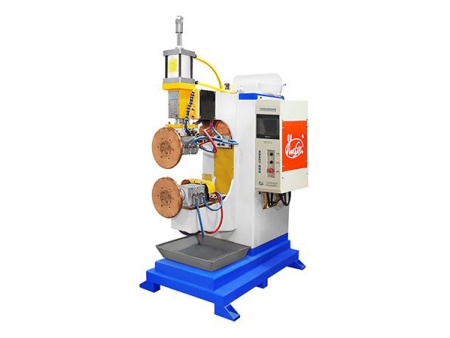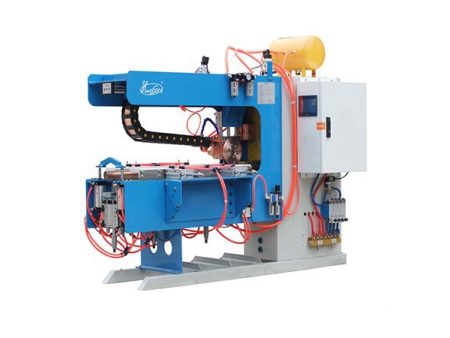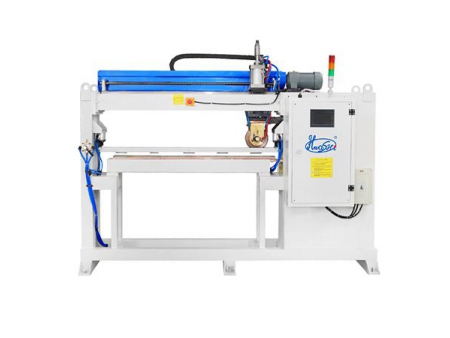Resistance Seam Welding Machine
- Types
- Samples
- Specifications
- Features
- Details
Seam welding is a resistance welding process for joining metal sheets in continuous, leak tight seam joints by directly applying opposing forces with electrodes consisting of rotary wheels. The seam of the resistance seam welding machine consists of individual weld spots. The formation process of each weld spot involves three stages: pressure application, heating and melting, and cooling and crystallization, similar to spot welding. However, there are significant differences between seam welding and spot welding. Due to the inevitable occurrence of diversion, the distribution of the electrical and thermal fields in the welding area possesses its own characteristics. The rotary wheel of the seam welder continuously rotates to change the welding position during the application of pressure and electric heating, and as a result, the distribution of the electrical and thermal fields and the crystallization characteristics of the molten zone are all related to the speed of position change.
Products requiring sealed welding, such as welding temperature controllers, battery nickel sheets, oil-filled radiators, power capacitors, car shock absorbers, bicycle wheel rims, fryer baskets, water pumps, and can and barrel manufacturing.
- Standard resistance seam welder
For seam welding of metal sheets (copper, aluminum, stainless steel, galvanized steel)
- Automatic longitudinal seam welder
For automatic longitudinal seam welding and straight seam welding of cylindrical thin sheets
- Automatic straight seam welding machine
For automatic straight seam welding
- Nickel strip seam welder
For seam welding of nickel strip
- Fryer basket seam welding machine
For seam welding of fryer basket
| Model | | |
| Power Supply | Three phase 380V±10% | Single phase 380V±10% |
| Rated Capacity | 250kVA | 300kVA |
| Welding Specifications | 32 sets | 16 sets |
| Diameter of Upper Electrode Wheel | 200mm | |
| Diameter of Lower Electrode Wheel | 200mm | |
| Electrode Wheel Width | 5mm | |
| Speed | 0-800mm/min (stepless adjustable) | |
| Distance Between Electrode Wheels | 50mm | |
| Throat Depth | 500mm | |
| Drive Method | Upper Electrode Wheel Drive (simultaneous drive with upper and lower wheels is customizable) | |
- The seam welder utilizes a cylinder pressing structure, ensuring consistent pressure distribution across the entire length of the weld seam. The pressure can be easily adjusted, and the welding speed is controlled through a variable frequency drive, ensuring stable and uniform welding speed.
- Optional upper and lower electrode driving modes: allows for convenient operation. The transformer and electrodes are equipped with an efficient water-saving circulating cooling system, which helps maintain a stable current output.
- Longitudinal and transverse seam welding modes: makes it suitable for welding various types of products, providing versatility and adaptability.
- Power controller
Optional in cost-effective AC power supply or stable and energy-saving mid-frequency power supply.
- Welding power transmitted by silver contacts
Drive provided on top or bottom roller electrode as required, facilitating ease of use.
- Straight seam welding wheel
For straight seam welding
- Circular seam welding wheel
For circular seam welding




